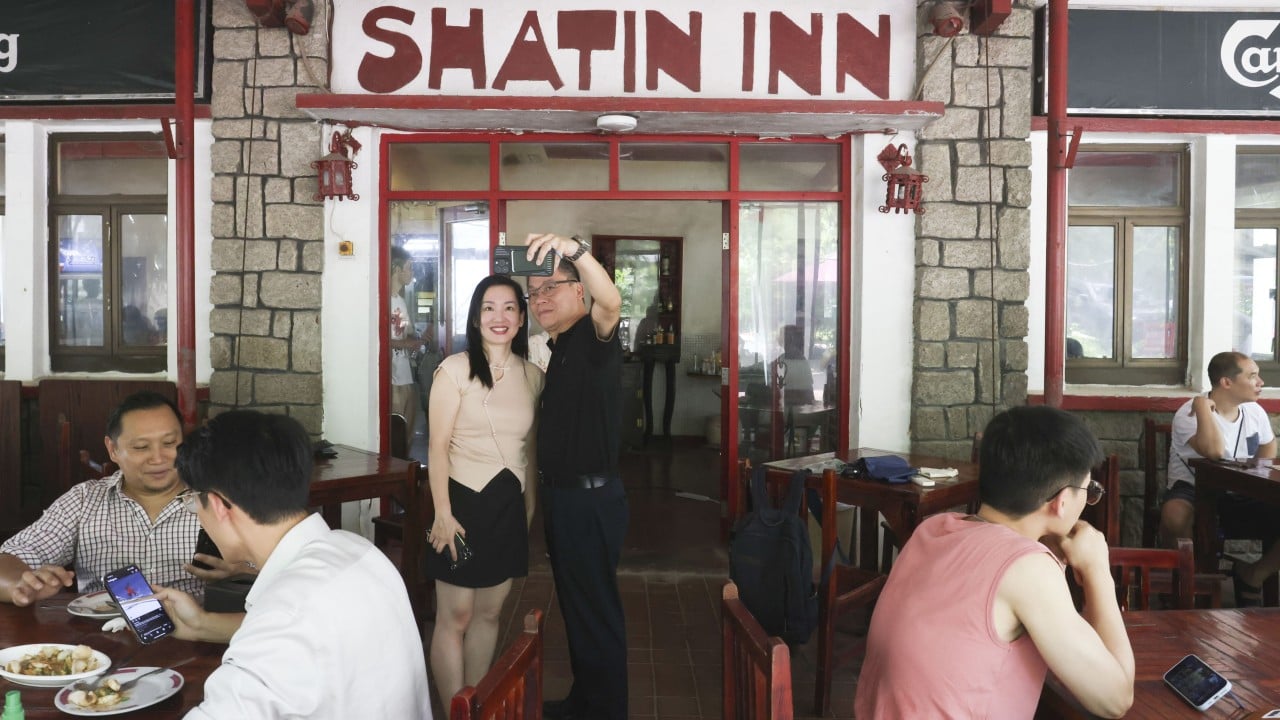An open-air restaurant in Hong Kong that previously featured in many local films has confirmed it will shut down in late September after 60 years, even as news of its imminent closure attracted crowds of diners.
Scores of customers stood in line outside Shatin Inn Restaurant in Sha Tin before it opened at noon on Wednesday after its usual weekly rest-day closure, as word spread that the establishment would soon shut for good. Many cars were parked outside and all of the restaurant’s 20 tables were occupied soon after it opened.
Known for its Indonesian cuisine, especially satay skewers, the restaurant is tucked under the shade of trees along Tai Po Road and was a popular setting in many Hong Kong films from the 1960s to the 1990s, including All About Ah-long, a 1989 drama starring Chow Yun-fat and Taiwanese actress Sylvia Chang.
However, the owners recently decided the diner would cease operations permanently in late September, a staff member told the Post on Wednesday.
“Business was poor last year and fell to its lowest level during this year’s Lunar New Year, which prompted us to finally close the restaurant,” said a staff member surnamed Kwok, who has been with the establishment for more than 20 years.
“These days many people are heading north to the mainland to eat, and that affects our business a lot.”

Kwok’s comments were consistent with a growing trend of residents travelling to Shenzhen for shopping over weekends and public holidays, to take advantage of the weaker yuan, and because of higher prices in Hong Kong.
Earlier this month, American restaurant chain Outback Steakhouse announced it had closed nine of its 19 restaurants in Hong Kong, and laid off more than 300 staff members.
Kwok said business at Shatin Inn Restaurant “revived slightly” after initial word of its closure spread on Monday.
Among the customers on Wednesday was a man surnamed Mok, 68, who had made a special point of visiting the restaurant and had brought along a picture taken in 1957 that showed his parents holding him as a boy outside the building.
“The building and the sign board has not changed at all. But there used to be a playground outside and ground was not paved back then,” he reminisced.
“A lot of places in Sha Tin, apart from this restaurant, have gone. I miss these places but, you know, times change.”

Mok said he had visited the restaurant last October for the first time in years after returning to Hong Kong from Canada, where he had lived for about two decades, and there were already signs then that “business was bleak, with only four and five tables occupied”.
“The shade and the old style make this place unique, you can hardly find a similar restaurant in Hong Kong any more,” he added.
However, another customer surnamed Chan did not share Mok’s nostalgia, saying the place was “shabby”.
“There are no air conditioners but only ceiling fans, and the choice of food is limited,” said the 60-year-old, who visited for the first time only after hearing news of the closure.
“Many restaurants on the mainland are better and have a more comfortable environment,” he added.
A 28-year-old customer surnamed Ho came from Kowloon Bay with his colleagues, saying they had wanted to take a trip down memory lane together.
“First time I visited this restaurant with these friends, I liked the satay skewers and the fried noodles. We like the environment, not too sunny, and it’s nice to have the wind blowing as if we’re on a mountain,” he said.

Latest official statistics showed restaurant receipts between April and June were HK$26.9 billion (US$3.4 billion), a year-on-year decline of 2.1 per cent. The volume of restaurant receipts also fell by 4.6 per cent compared with the same period last year.
Ryan Lam chun-wang, head of research of Shanghai Commercial bank, said reasons for the decline were “multi-faceted”.
“Teenagers do not aspire to be blue-collar workers with long working hours, which translates into salary pressure on the food and beverage industry,” Lam said. “And consumers in Hong Kong crave different dining experiences, which are readily available across the border.”
Lam said rental pressure also undermined the industry, as landlords were often unwilling to lower rents.
“They would rather let a shop stand empty than cut the rent [for a new tenant],” he said.


